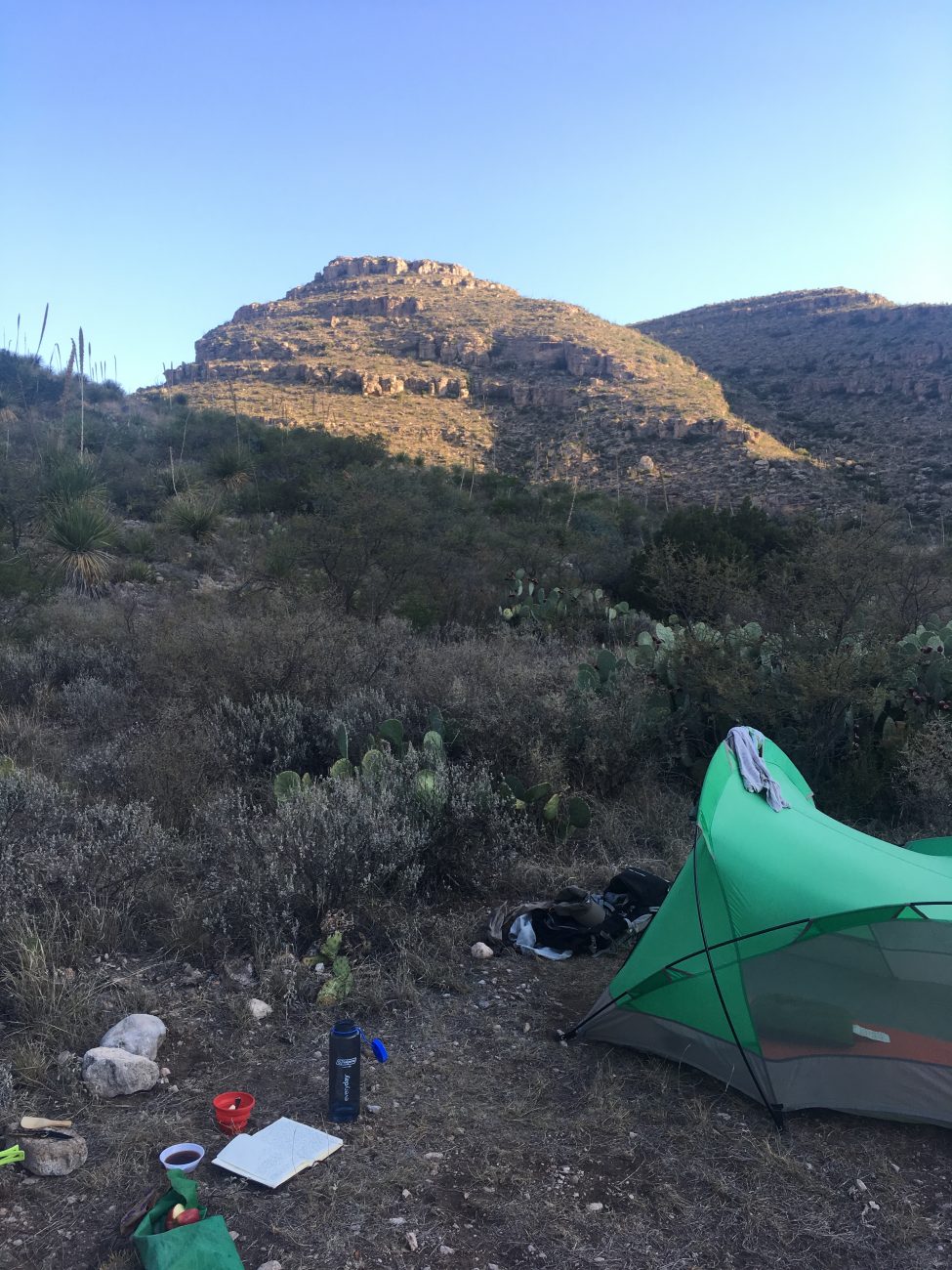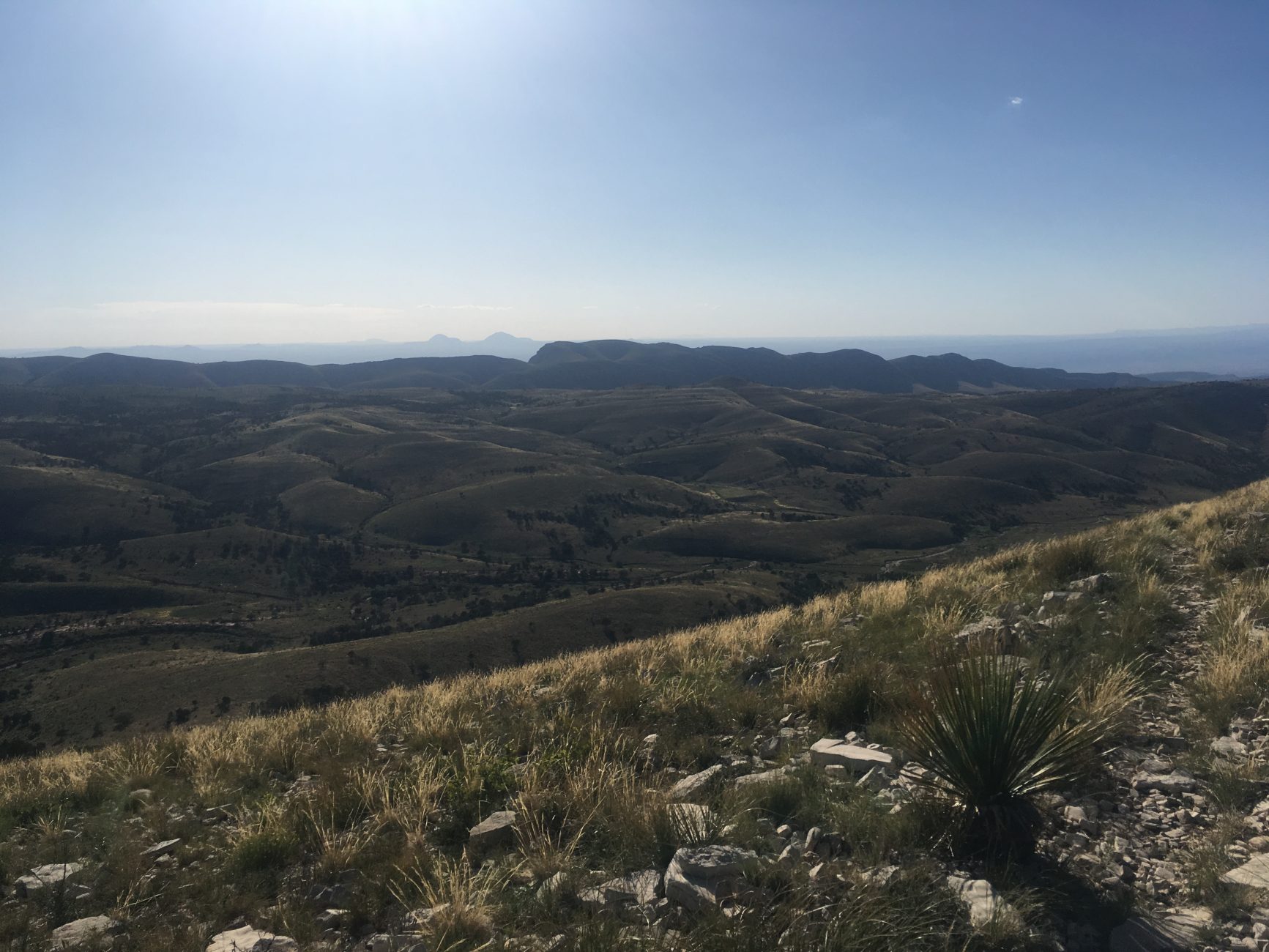A night in the bat house
It’s 7pm and I’m sitting in the bat house, rolling chair creaking on the wood floor. The bats are starting to wake up, interrupting the creak of the chair with their high-pitched chirps. I couldn’t help but smile when I learned that some bats “sing” to each other. Their social calls are interesting—less predictable than a bird call, more lively than an insect’s chirp. You probably wouldn’t notice their call in the wild unless you had heard it before. When you know what to listen for, it’s easy to hear a bat on your evening walk.
The bats chat it up in their mesh habitats (the kind of enclosure people use for butterflies, to be exact), but I can’t see most of them. They’re hiding up in the tunnels of fabric that hang from the ceiling of their habitats. You can see their outbursts, however, as they’re signaled by a vibrating piece of fabric. Some of the bats roost in baby security blankets, which are essentially a stuffed animal head attached to a small, soft blanket. These also vibrate as bats have their squabbles, a soft vibration that’s almost like a baby shaking a rattle.
I should clarify that not all of the bat house residents are quite as talkative. The Mexican free-tailed bats are probably the most chatty, easily stirring up conversations without any kind of prompting from me. I wonder if they learned to be friendly from living in such huge colonies. It’s probably hard to be shy when you’re packed in with over a million other bats. The teeny evening bats and cave myotis have strong voices, but they’ll only use them when you have the audacity to move their roost by a whopping millimeter.
Another much quieter sound in the bat house comes from the mealworms. The mealworms wriggle in a small container, making a very soft brushing noise. I always wonder if the bats get excited when they hear it; I’m convinced that the large group of male Mexican free-tailed bats does. But then again, they seem very excited in general.
While many of the bats prefer to stay hidden, those free-tail boys lounge right in the open. They’ll be perched on the left and right sides of the habitat, hanging from the top, clinging to the opening of the habitat. When it’s time to open their habitat, I often have to wait for Stubby, one of the older bats, to crawl off the habitat’s zippered flap so I can start pulling the many hiding spots and food dishes out one by one.
While I’m busy corralling all the mealworms that have climbed out of the food dishes and escaped into the dark recesses of the habitat, the free-tails stare at me. They’re not bristling at the theft of what could have been a midnight snack or cowering at the huge hand that’s disrupting their evening—they’re just observing. It makes sense that these bats would be this observant when you consider what their prey is: fast-moving bugs that hide amongst the dark skies. The mealworms must seem like sitting ducks compared to the bats’ natural prey.
Many people don’t realize that bat rehabilitation often revolves around mealworm husbandry. Before I can even attempt to eavesdrop on the bats’ conversations, I have to sift through big tubs of mealworms and, well, meal. Once the mealworms are safely in a smaller, more manageable tub, it’s time to pick out the dead or over-mature ones. The worms don’t gross me out, but the grubs that are well on their way to becoming beetles are a little unpleasant. They’re the first to go.
Once the mealworms are prepped, I work my way through each of the habitats in the bat house. Most of these bats are permanent residents of the refuge, so I see the same faces each week. The bats are given many roosting options, but they pick their favorite very quickly and seem to always be in the same spot. Bats also don’t like change, and they will let you know how much you’ve disturbed them when you embark on the process of moving them from one habitat to another.
In between cleaning habitats I go out into the flight cage. This is where releasable bats get a chance to work on their flight skills. During baby season, there are many flashes of brown, black, red, and yellow fur moving quickly through the cage. The bats do fast circuits through the flight cage, soaring over water troughs and rows of plants designed to attract moths.
I’ll admit that the first time I was in the flight cage around sunset, I was a little anxious about having bats fly so close to me. When you see a bat flying in the wild, they’re usually far up above you. The bats in the flight cage do fly up high, but they’re close enough for me to make out their fuzzy tail membranes and broad feet. But any initial anxieties I had about being in the flight cage at night were soon calmed by seeing just how capable the bats are at flying. Even if some of the bats in the flight cage are still working on “getting their wings” and being released back into the wild, they are so adept at maneuvering in the air. They still wow me with their speed and incredible agility. They can turn on a dime, and they’re too busy having fun to want anything to do with me.
After seeing the high-flying circus acts in the flight cage, I head back to the bat house. There’s a bit more chirps than when I left because the bats have woken up a little more. When the last of the habitats is clean, all I can hear is the bats munching on their dinner (or is it breakfast?). I pack up my things, turn out the lights, and say bye to the bats. The night is young, and I know that their fun has just begun.





